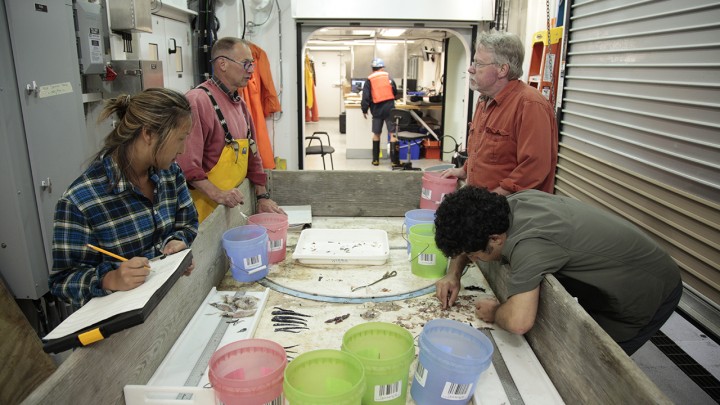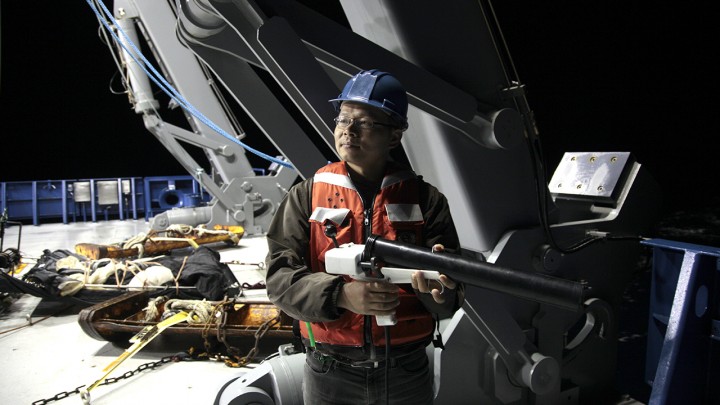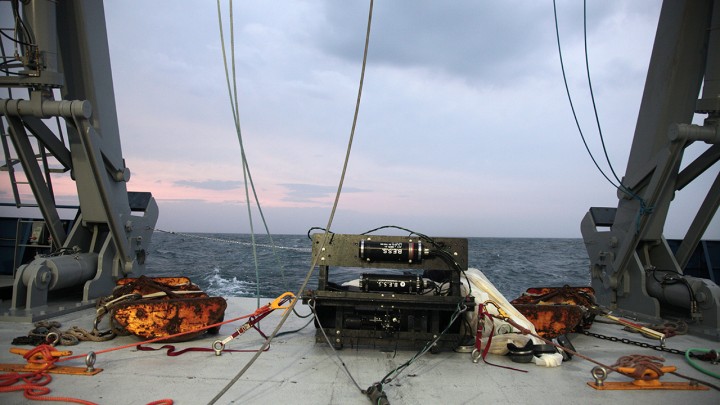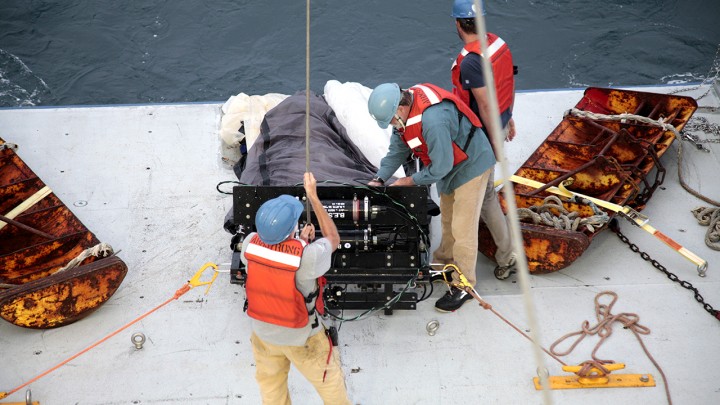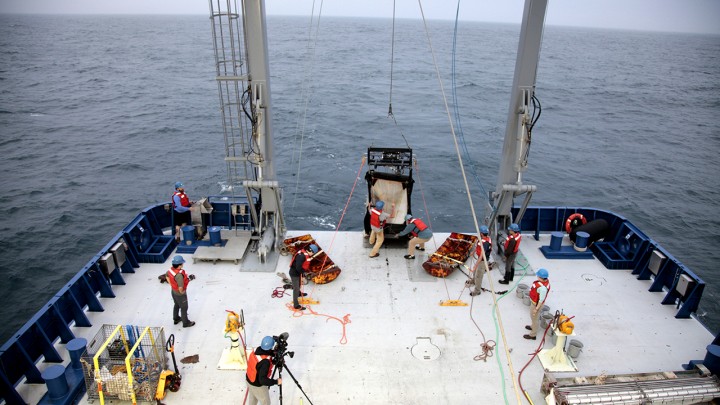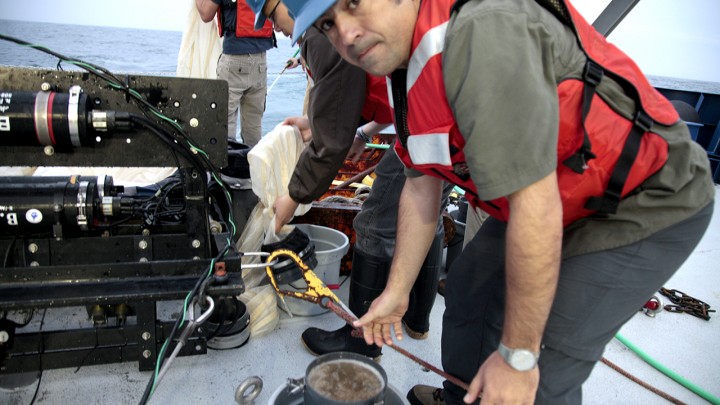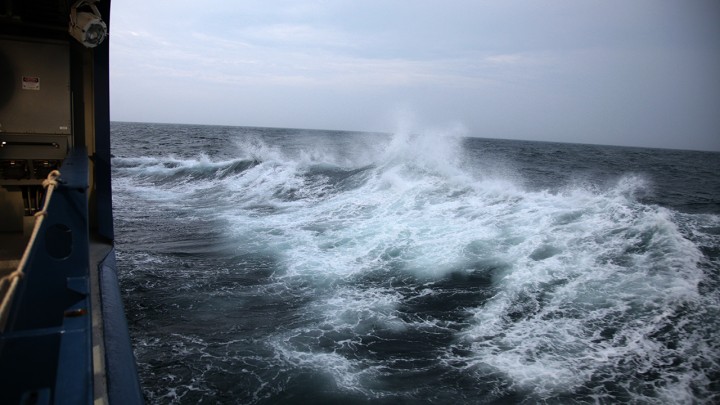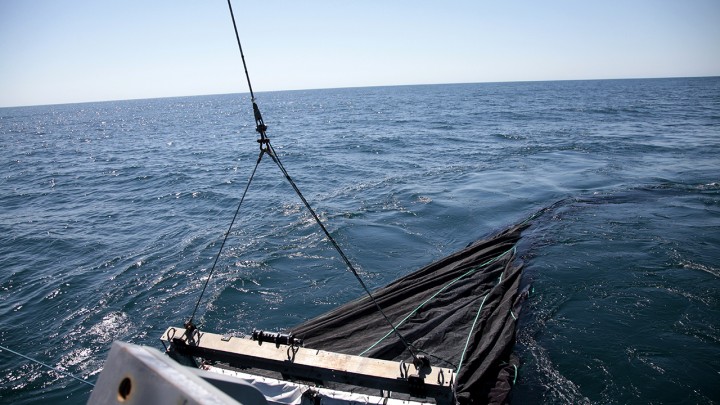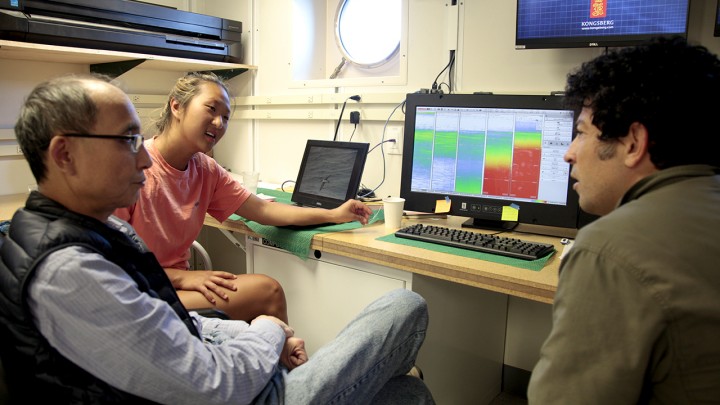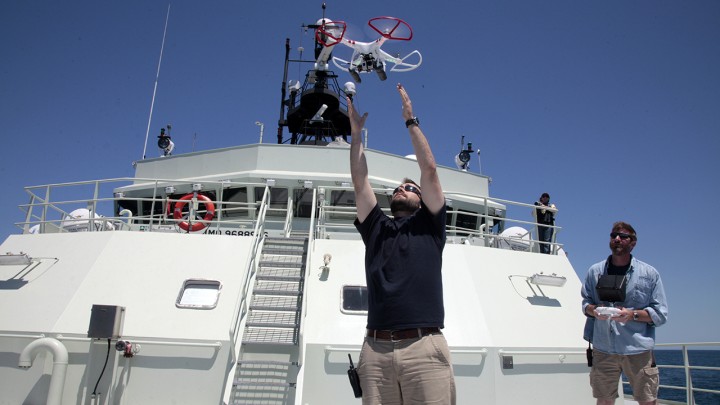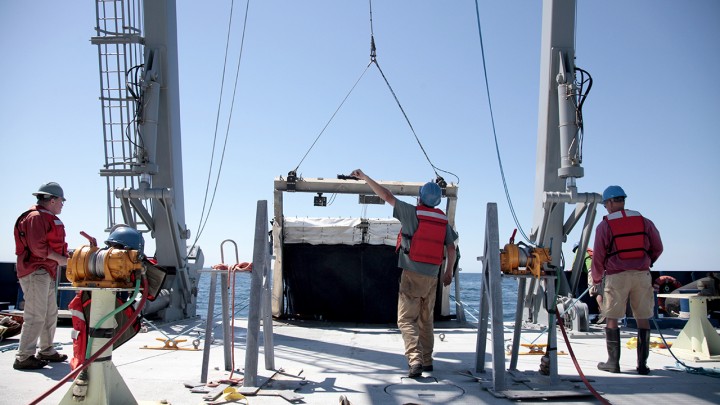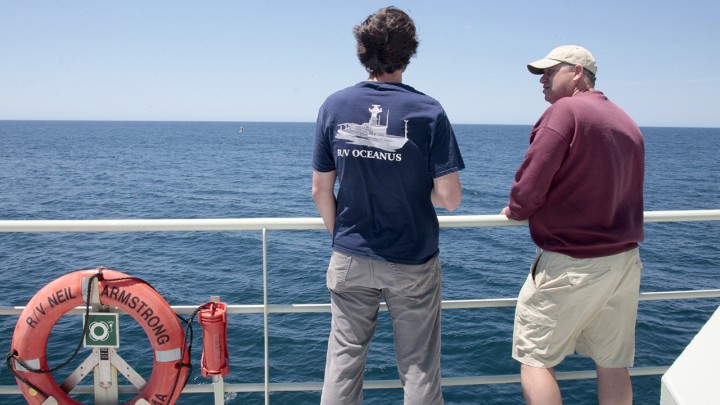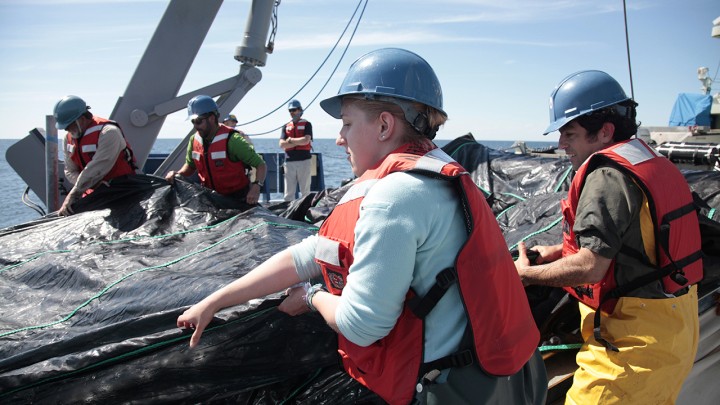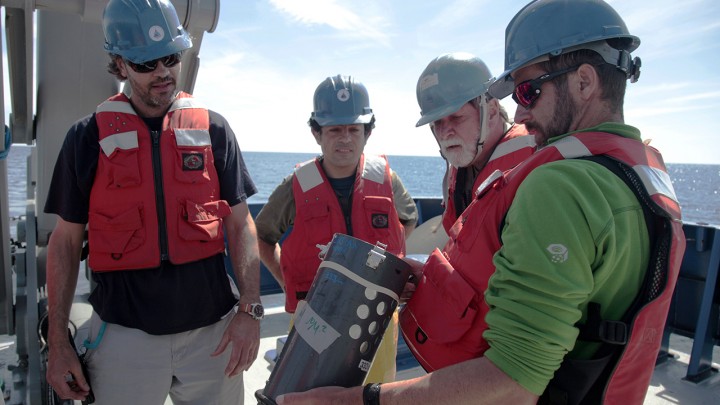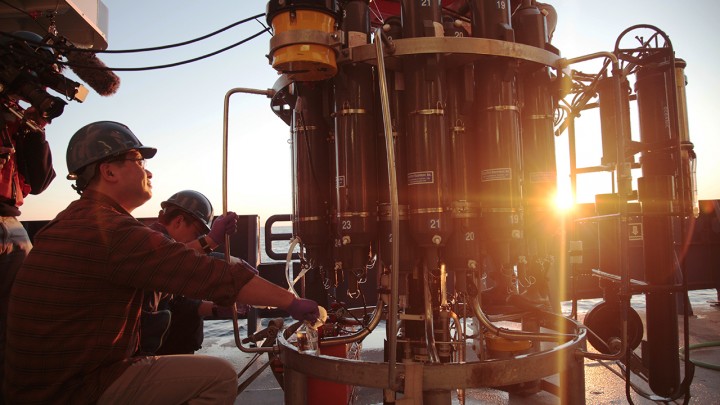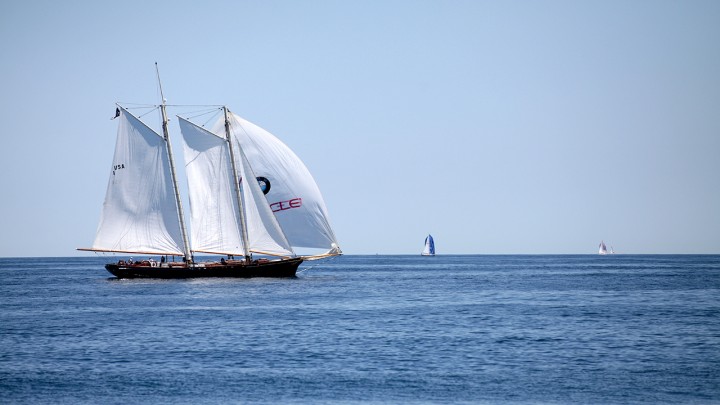40.22N, 70.11W
It’s the first day of summer, but strangely it’s the first cool, foggy day we’ve experienced on this otherwise pleasant cruise. We can see evidence of rain that fell overnight and lightning-inflected patches of storms all around us as we steam over the continental shelf.
Yesterday, the ship transformed into a fishing vessel, outfitted with a small mid-water trawl that took some effort from the science party and crew to set up. A test trawl at about 40 meters (120 feet) netted a dozen starfish. But by following the zooplankton on the EK-80, then turning around to capture them, much more came in from three times that depth. As National Marine Fisheries Service biologist Mike Jech explained, the net opening is too small and was dragged too slow to catch fish. But that wasn’t our intention—we’re looking for what the fish eat.

